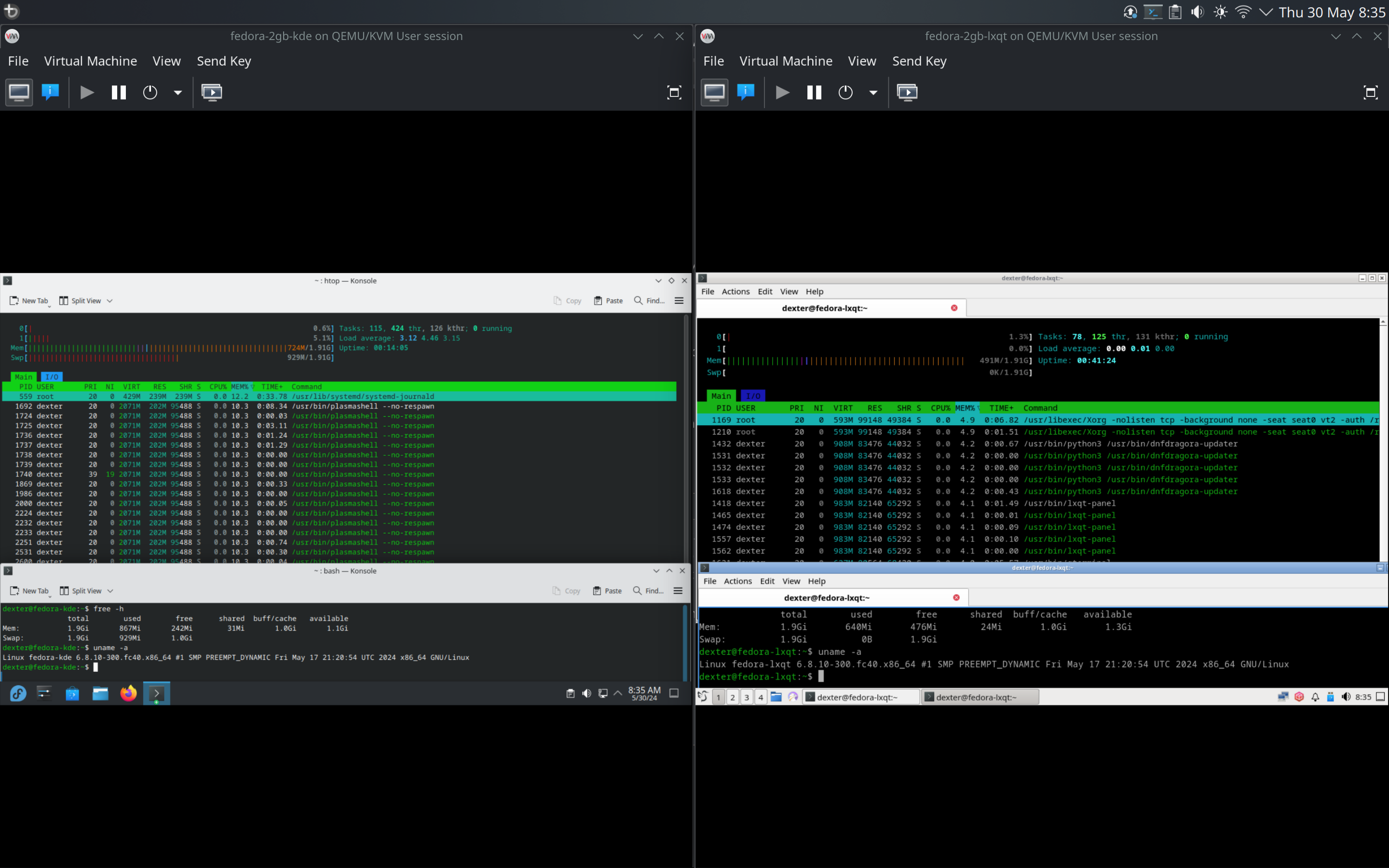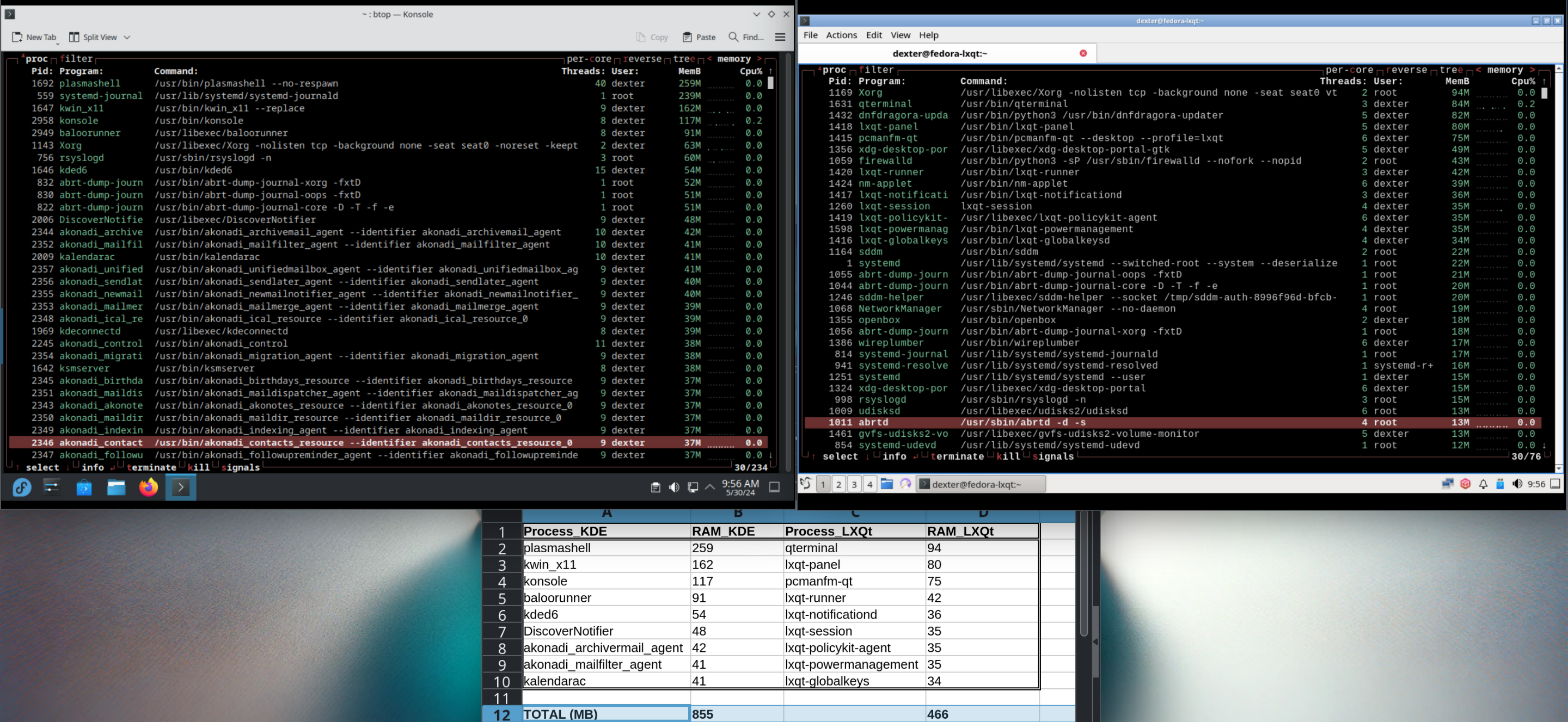Opt out? Opt in? Opt Green!
50% of consumers buy new devices due to unsupported software, while the “tsunami of #eWaste” continues to rise.
#FreeSoftware #OpenSource can keep those devices in use and out of the landfill. Today!
Say hello to the new #KDEEco project “#OptGreen: #SustainableSoftware For Sustainable Hardware”.
https://eco.kde.org/blog/2024-05-29_introducing-ns4nh/
You don’t need new hardware for a secure, up-to-date device; you just need the right software!
So, are there any plans to reduce the bloat in KDE, maybe even make a lightweight version (like LXQt) that’s suitable for older PCs with limited resources?
Edit: Video proving that what you are saying is not correct:
https://tube.kockatoo.org/w/g9p72nNRHi6bArN4ABtSQM
I think that what you are calling “KDE” may be “Plasma”, since you are comparing with another desktop environment.
To answer your question, yes, and the process started some years ago. It sounds like you may be a bit out of the loop, as Plasma now weighs more or less the same as XFCE, or thereabouts (these things are harder to measure than one may assume). I personally installed Plasma 6 on a Dell XPS PP25L from 2008 and it works flawlessly.
Edit: Screenshots proving that what you’re saying is not correct:


I’m not talking specifically about Plasma, I’m talking about the “DE” part of KDE in general; and particularly in this context of repurposing and extending the life of old PCs.
I find it a bit ironic for KDE to be pushing this message, when it’s a heavy DE (relatively speaking) - it’s NOT what anyone would have in mind when when selecting a DE for an old PC.
For instance, take LXQt - run the default/recommended file browser, terminal and text editor, and compare it with KDE + equivalents - you’d see a significant difference in resource consumption. On a system with low RAM, that extra bit of free memory makes a big difference, as it could mean avoiding the penalty hit of the swap file, which you’d invariably run into as soon as you fire up a modern Web browser. So it’s vital that the DE use as little resources as possible on such a machine.
I’m afraid you are definitely out of the loop: Plasma is the DE. That is what it’s called: Plasma, not KDE. KDE refers to the organisation, the community and all the software the community produces, which includes Plasma (the DE), but also all the apps, frameworks, widgets, etc.
I find it a bit ironic for KDE to be pushing this message, when it’s a heavy DE (relatively speaking)
You didn’t seem to read my message. Allow me to repeat the gist here: Plasma (the DE) works fluidly on a machine bought in 2008 which comes with an Intel Core 2 Duo running at 1.8GHz. This machine has an onboard Intel GMA X3100 GPU and 2GB Memory. I doubt a heavy/bloated environment like you are imagining would even be able to display the log in screen on that.
I would advise you stop repeating third-hand FUD, as it is not true, and you tried the software out for yourself. I am sure you will be surprised at how light Plasma (the DE) is.
Correct me if I’m wrong, but this #OptGreen project isn’t talking specifically about Plasma, is it? They don’t mention Plasma anywhere on the page they linked.
In any case, that’s irrelevant, also, I don’t doubt that KDE can’t run at all under the specs you mentioned - that’s not the issue. The question is, how much free/usable RAM do you actually have on that machine - let’s say with no apps open first, and with then check again with Konsole + Dolphin + KWrite/Kate open? And for fun, fire up Konqueror as well and check again.
I’m taking about KDE the project.
No you are not. Or you weren’t. Allow me to quote your own post:
I’m talking about the “DE” part of KDE in general;
As the DE is Plasma, that is the part I am addressing. Now you are moving the goalposts. That said, I do not know what you mean when you refer to “the KDE project”, as KDE encompasses many projects.
In any case, I don’t doubt that KDE can’t run at all under the specs you mentioned
So you don’t doubt it is light. Of course if we pile on a bunch of apps, like we could throw in Blender open 50 times rendering 4K animations and I’m sure it will make the laptop run slow. But that would be because of Blender, not the DE.
However, for the sake of argument, I did try the three examples you quoted, Dolphin, Konsole and Kate, and as you can see in the aforementioned video, they are all also very light and worked perfectly simultaneously on the 2008 machine. I do not have Konqueror installed on that machine, as it is not considered an essential part of Plasma anymore and is not widely used.
Just for my 2 cents, I installed kde on an ancient HP elitebook, and while it was a tad slow to boot from disk due to the hard drive, the daily usage was honestly totally fine, and way better than the windows 7 it came with. You are right that KDE is very light compared to windows, or even in general.
You’re arguing semantics and that’s not the point I’m trying to argue here. Forget the term “Plasma”. I don’t really care about what the DE is branded as or what’s in “Plasma” the software package. When I say “KDE”, I mean the desktop + all the basic default/recommended apps that you’d see on a typical KDE installation, such as Dolphin, Konsole, Kate, Kalculator, Spectacle etc that’s part of the KDE project. IDK whether the apps I’ve mentioned are considered part of “Plasma” or not, but again, that’s not the point, I’m saying this is what I meant when I said “KDE” - and what most people would expect when they picture a “KDE” environment.
Anyways, I tested this myself on two identical VMs with 2GB RAM, one installed with Fedora 40 KDE, and another with Fedora 40 LXQt, both set to use X11 (because LXQt isn’t Wayland ready yet), both updated and running the latest kernel 6.8.10-300.fc40. I logged into the DEs, opened only two terminal windows and nothing else, ran, and ran
htop. The screenshot speaks for itself:
And when I tried disabling swap on both machines, the KDE machine was practically unusable, with only 53MB RAM remaining before it completely froze on me. Meanwhile, the LXQt one was still very much usable even without swap enabled.
I’d like to see you try running without swap and see how it fares. And if you think it’s unfair disabling swap on a 2GB machine - try installing LXQt yourself, disable swap and see for yourself how much more usable it is compared to KDE.
And this is why I say KDE is bloated and not suitable for old machines.
Edit: Also, check out the memory consumption listed by a user in this post: https://lemmy.nz/comment/9070317
Edit2: Here’s a screenshot of the top 30 processes on my test systems, side-by-side:

Of the above, I calculated the usage of the top 10 processes specific to each respective DE, and you can see that KDE’s memory usage is almost double that of LXQt. Had I counted all the DE-specific processes, it’d no doubt be a lot more than double.
You are moving the goalpost once again. First to be light the DE (i.e. Plasma) had to be light; then the DE had to be light, but not Plasma (?), but your redefinition of DE as in Plasma, plus a random set of apps (Dolphin, Konsole and Kate – none of which are distributed with Plasma, by the way).
As that also proved to be light, now you are basing your argument on (a) a poll (?) and (b) that there is at least one desktop that is lighter and that does not need swap.
I am perfectly willing to admit the latter, mainly because it is true: there ARE DEs lighter than Plasma. But it is a strawman argument, as admitting that does not invalidate the statement that “Plasma is light” and “KDE’S software is not bloated”.
I wish you would stick to one thing and argue in good faith. You seem incapable of that so, I’m done.





